Lentil is a popular plant both in cooking and folk medicine. This annual culture. The height of the plant is 10-60 cm. The fruits are presented in the form of beans. They differ in color. So, depending on the variety, fruits can be black, green, brown and even red. It is worth noting an interesting feature of this plant: lentils does not accumulate nitrates and radionuclides. Therefore, it remains an eco-friendly product, even if grown in contaminated areas. It is also worth noting the unpretentiousness and ability to transfer short freezes during the growth period. In addition, this plant can withstand long-term drought. This is possible due to the massive root system. We will tell further about the peculiarities of growing this culture.
Plant characteristics
Stem lentils pretty branched, steaming leaves. When the culture reaches the peak of its development, externally resembles a fluffy bush. Beans that give lentils can have different sizes. So, distinguish with a large, fine-seized lentil. The most unpretentious is considered a small variety. The plant is very beautiful during flowering. Many types of lentils are self-polished. Cross pollination can be found only in some varieties of this plant. Next, consider the food and therapeutic quality of culture.
Lentil beans possess therapeutic properties. Therefore, it is widely used in folk medicine. In particular, the decoction of fruits is used as a means for poisoning and lung diseases. In case of diseases of the stomach and colic, they use a puree made from the beans of this plant. According to specialists of traditional medicine, the decoction of this plant is used to remove toxic substances from the body. In addition, lentils include a gentle diet in the menu. After all, it contains a lot of fiber, but there is little calories and even aim at all, you can feel saturation.
From lentils prepare a variety of dishes and products. So, it is used to prepare a boiler, pillow, porridge, soups and useful bread. Lentils well combined with meat, eggs and fish. It is especially worth noting such a useful dish as lential porridge, which is able to strengthen the heart system and vessels. It is important that even after thermal processing, lentil does not lose its useful properties. The fruits contain a lot of iron, amino acids, group vitamins B. In this case, this product is very well absorbed by the human body. That is why many are trying to grow lentils in their dacha.
Lentil: Growing in the country
As mentioned above, lentils are a rather unpretentious plant. Thanks to which it is easy to grow. Nevertheless, it is worth knowing some of the peculiarities of culture. So, she loves loose loogline or sampling soils. Of course, you can plant lentils and on heavy soils - it will grow and give the fruit, but no good harvest in such conditions it is not worth waiting. In addition, this culture does not tolerate the soils poorly. Therefore, if you have such a land on the site, then the first thing to be done is to adjust its acidity. There are quite a lot of ways to do this. One of the options is to use lime.
Lentil is recommended to plant in an outdoor sunshine. In the shade, it can also grow, but again in such conditions should not be hoped for a good harvest. Culture will feel good in place, where in the past season potatoes, corn or wintering have grown. If you have already found a landing plot, then a certain amount of fertilizers is recommended before landing culture. So, for every square. The meter will be required by 55-65 gr. Potash and phosphate feeding. The best time for fertilizer is considered the middle of spring or autumn.
It is best to get to the sowing the best in the early spring when snow comes down and the soil gets up slightly. Seeds should be soaked before sowing for a day to increase yield in the future. It is usually soaked in a solution consisting of 100 ml of water and 2 drops of epin. Before planting seeds, you need to dry. Then they sit in the holes at least 40 mm depth. At the same time, between adjacent grooves should be at least 120 mm. After that, the wells are drunk and thoroughly tamped.
After about 14 days, the seeds will start massively germinate. At this time, it will be necessary to make a weeding between the rows, so that the weeds do not interfere with the growth of lentils. It is advisable to perform this job at noon. It is worth noting that the first month and a half culture grows pretty slowly. It is mainly due to the fact that during this period the seedlings are gaining strength for flowering. When the flowering time passes, the growth of lentil stems is significantly accelerated. During this period, the culture becomes a branched shrub. Vintage is usually collected at the end of the summer or at the beginning of autumn. It should be borne in mind that lentils ripens unevenly. First ripen the beans on the lower parts of the bush, and then after some time, the fruits appear on the upper branches.
Expressing lentils: Care rules
Despite the unpretentiousness of this plant, it still requires care. So, during the first 1.5 months after landing, it is necessary to regularly moisten the soil in order to prevent drying. Lentils, of course, are known for its resistance to drought, but this may affect the future crop. Therefore, this recommendation should not be neglected. When the stems are rapidly, watering can be reduced to 2-3 times a week. If weed on your site usually grow, then in addition to irrigation, it is necessary to regularly perform a weeding in the aisle. As you can see, lentil's care is quite simple.
Culture varieties
It is quite difficult for sale to find lentil seeds. The following varieties are most common in our latitudes:
- Lyubava. This is a medieval variety that is known for the nutrient and beneficial properties of fruits. Ripe beans have a light yellow shade. For full ripening required about 70 days. Bushes of this variety can grow high to 0.6 m.
- Anthia. This is a reproductive grade, whose seed ripening is required from 81 to 90 days. Ripe seeds have a smooth surface and remain green. The fruits of this variety have high culinary qualities. It is also worth noting the stability of this variety to many ailments and to drought.
- Luhanchanka. Mid-line variety to which is required from 81 to 95 days for ripening. This species is known for drought and high yield. In this case, this culture has high taste.
- Steppe 244. This variety was already led enough long ago, namely, during the times of the Soviet Union. It is resistant to drought and squeezing. Seeds of beans of this variety are yellow. When cooking is well welded.
There are several types of lentils. In size and shape of seeds, as mentioned above, distinguishes a small-free and large lentil. The latter is also called a plate. Small-free harder to grow and therefore it is usually worth it.
It is still worth allocating such types:
- Green or unlooking brown lentil. This is a very useful product for people who suffer from diabetes, as well as diseases of the stomach and intestines. At least an hour is required to prepare these fruits. However, it turns out a very tasty dish. This type of lentils can be used to feed young children.
- There is still a brown lentil, which is most often used to prepare the first dishes, porridge, salads and snacks. If the seeds are pre-dunk, they will become ready for just 25 minutes. If adding the fruits of this variety in the first dishes, they will give them a nut aroma. Grain is able to hold the shape even with long-term thermal processing.
- Another type of lentils is black. She was bred in Canada. It has small seeds of about 30 mm in size. It is preparing enough quickly - enough 20 minutes. At the same time, the finished seeds have excellent taste.
- Red or, as elsewhere called, Egyptian lentils. For cooking enough just 15 minutes. In some cases, even less. Delicious soups and puree are obtained from fruits. In this type of beans there is a lot of iron, which makes them especially useful for people suffering from anemia.
Diseases and pests of lentils
One of the frequent pests for lentils is the grains. These parasites are black bugs, 3-3.6 mm in size. Among other similar zhukov, they can be distinguished by major brown or gray hairs placed near the wings. Winter grains usually spend inside damaged fruits. Less often - out of them. In the fields that are sown lentils, they are going to the very beginning of flowering. Eggs with parasites usually postpone on young beans. When the larva appears from the eggs, it penetrates into Bob, after which it is in young seeds where life supports the contents of fruits. After the completion of the development of the larvae, they turn into a pupa, and from them, in turn, bugs appear.
Another serious pest for lentils is considered meadow moth. They represent a special danger in periods of increasing the number and mass reproduction, which usually occurs every 10-12 years. With their actions, they are able to reduce yield from 50 to 100%, which is why plants die. In addition to lentils, meadow moth is striking many cultural plants.
Lentils can harm the scoop-gamma from the family of scales. The caterpillars of this pest amaze leaflets. At the same time, they reset the holes or sprinkle a sheet around the edges. In some cases, the leaves of the caterpillars are eaten entirely. They are usually in the upper soil layers. When the caterpillar turns into a butterfly, then it begins to eat nectar. Eggs are postponed more often on the lower side of the leaves. New parasites appear from delayed eggs after 3-8 days. To combat this pest use inter-row processing. In addition, it is effective for child plowing, the destruction of weed plants on which eggs can be postponed, as well as sowing of flax.
As for diseases, the most often lentils have ascohithosis, fusariosis and rust. Askochithosis is a fungal disease, which is characterized by the appearance on the leaves of dark spots of different shapes and size. The edges of these stains have clear contours. On the stems of damaged crops, small extended or point ulcers are noticeable. On the beans, the fungus leaves the convex spots of a dark brown shade. Due to damage to the sash, fruits are not formed. Seeds of affected plants are sluggish, lightweight, with dark spots. Incubation period The fungus flows from 3 to 5 days. Especially well develops during the period of greater precipitation. To prevent the development of the disease, you need to ventilate seeds before landing and "not delay" with their landing.


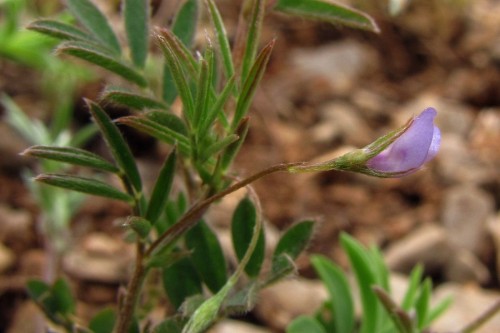
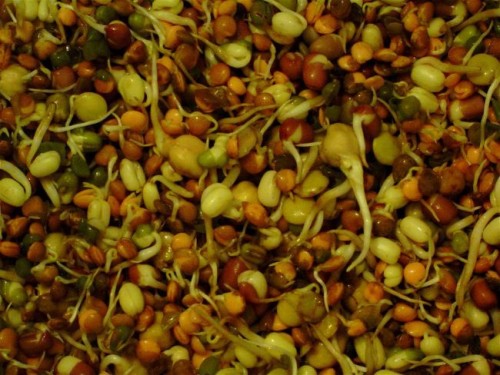
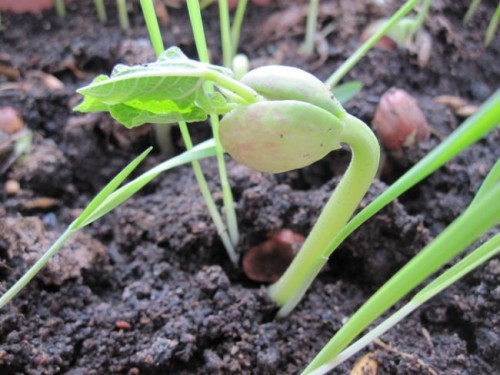
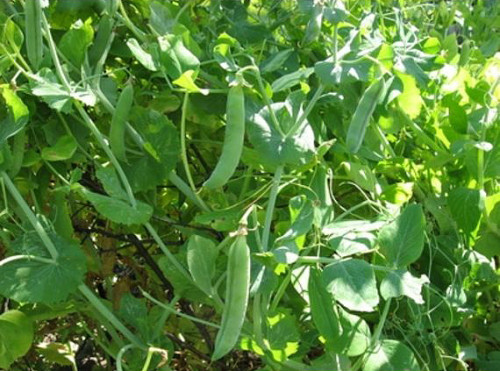
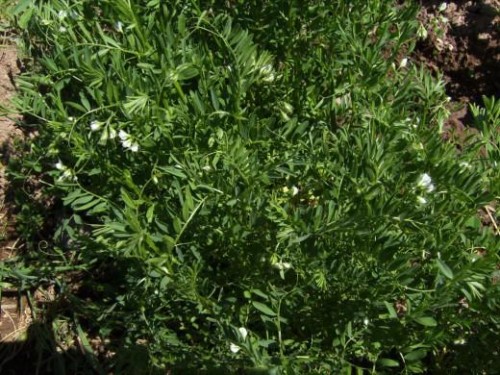
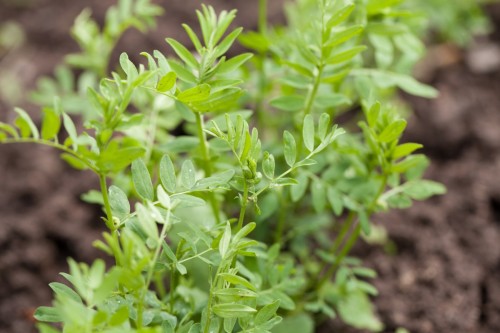
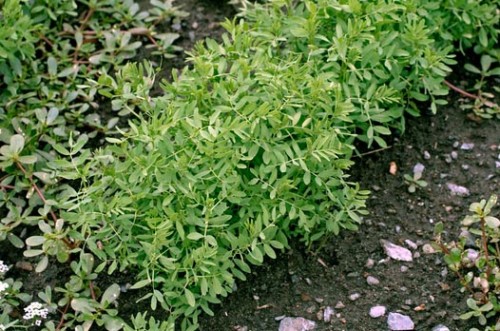












 Start a discussion ...
Start a discussion ...